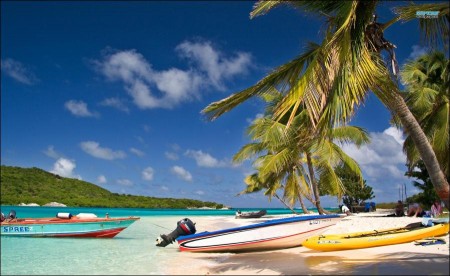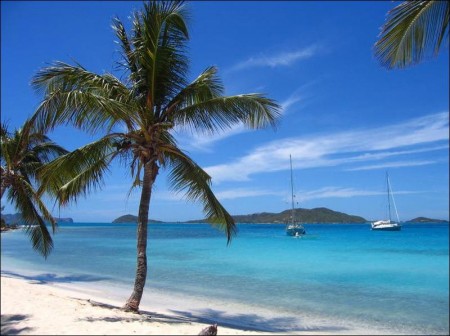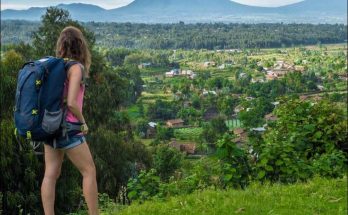Geologically and physiographically Trinidad and Tobago are outliers of the South American continent. Trinidad (area 1862 sq. mi.) is separated from Venezuela by the Gulf of Paria, which it encloses on the east, and by the narrow entrances to the gulf. The mountain range along the northern edge of the island, with a maximum elevation of 3085 feet, is a continuation of the range that forms the Paria Peninsula of Venezuela. The core of this range consists of crystalline schists with threads of quartz that are in places gold-bearing.
Foldings in the sedimentary rocks overlying these old schists are represented both in the main range itself and in two other ranges of hills running roughly parallel to it. The southern and most prominent of these, with elevations up to 600 feet, forms the south rim of the island. The central ridge is so masked by alluvial deposits from the Orinoco as to have little prominence except in one isolated summit (1028 feet). The whole north coast is rocky, and the east coast, beaten by the Atlantic surf, is practically unapproachable.
About 40 per cent of the island is under cultivation, and the remainder consists of forest reserves and undeveloped or waste country. Most of the undeveloped country is in the northern range, in the southern range of hills where development has been initiated only recently and there are no large estates, and in a large district in the southeast corner of the island where topography (there are large areas of swamp and of rough land) and poor soils appear to make forestation the only feasible development.
The sugar plantations form an irregular band averaging 4 or 5 miles in width along the west coast from Port of Spain to a few miles south of San Fernando. Here also is the greatest concentration of the population. The cacao plantations cover a much larger area. They include a strip immediately east of the belt of sugar plantations and of about the same width and, connecting with it, two broad areas north and south of the central range of hills, the northern of which reaches through to the east coast. Other principal areas of cacao plantations are the valleys of the south slope of the western half of the northern range and the southwest peninsula. Coconuts are grown in a narrow strip along the greater part of the east coast, on both coasts of the southwest peninsula, and in numerous scattered plantations throughout the sugar belt.
Visits: 105




